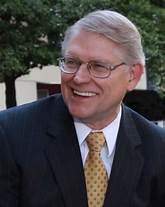Population-fueled U.S. Sprawl Undermines 30×30 Conservation Ambitions

By Roy Beck
The U.S. government recently joined the High Ambition Coalition for Nature and People, a group of more than 90 countries seeking to protect at least 30% of the planet from development by 2030.
Unfortunately, the current rate of urban sprawl devouring America’s natural habitat and farmland gives conservationists plenty of reasons to be skeptical of the federal commitment to these so-called “30×30” goals.
Our nation lost an additional 17,800 square miles of natural habitat and agricultural land to development between 2002 and 2017, according to the latest 15-year dataset from the federal Natural Resources Conservation Service. That’s an area larger than New Jersey, Delaware, and Connecticut combined.
Developers continue to apply chainsaw and bulldozer blades to about 1,200 square miles of rural land each year. And this sprawl shows no signs of stopping, because policymakers refuse to address the major root cause — population growth, which is mainly a product of federal immigration policies.
My organization has been conducting national, state, and regional studies of American rural land loss for two decades. Our newest study, examining every county in the country outside Alaska, found that 67% of rural land loss from 2002 to 2017 was related to U.S. population growth. About 11,950 square miles were developed to satisfy the needs of the additional 37 million residents of the United States in 2017, compared to 2002.
Net foreign in-migration caused a majority of that population growth, although the exact percentages differed significantly from state to state.
The other 33% of rural land loss — about 5,850 square miles — was related to dozens of factors that increased the average developed land per resident. On average, Americans were still increasing their consumption, which meant more land developed for houses, shopping malls, streets, schools, government buildings, power plants, waste treatment facilities, and places of employment, worship, and entertainment.
This sprawl is set to continue in the decades ahead — because the population continues to swell. The Census Bureau projects the population will grow from more than 332 million today to 404 million by 2060, an increase of about 18 million per decade.
Many of the same politicians and groups who are ambitiously calling for protecting 30% of the U.S. land area from development by 2030 are also advocating large increases in immigration that would swell the U.S. population even further. Most fail to even recognize that population growth is a major factor in causing the loss of open space and natural habitat in the United States.
The White House “30×30” plan, for example, does not have a single reference to population growth — even though the Global Footprint Network has found that, largely due to population growth, the United States is one of the worst contributors to the global loss of biodiversity.
Efforts, such as the 30×30 movement, that are dedicated to preserving and protecting open spaces are noble. But they’re highly unlikely to succeed — unless policymakers stop forcing the population growth that is primarily driving the loss of those open spaces.
Roy H. Beck is the Founder, President and CEO of NumbersUSA Education and Research Foundation.
